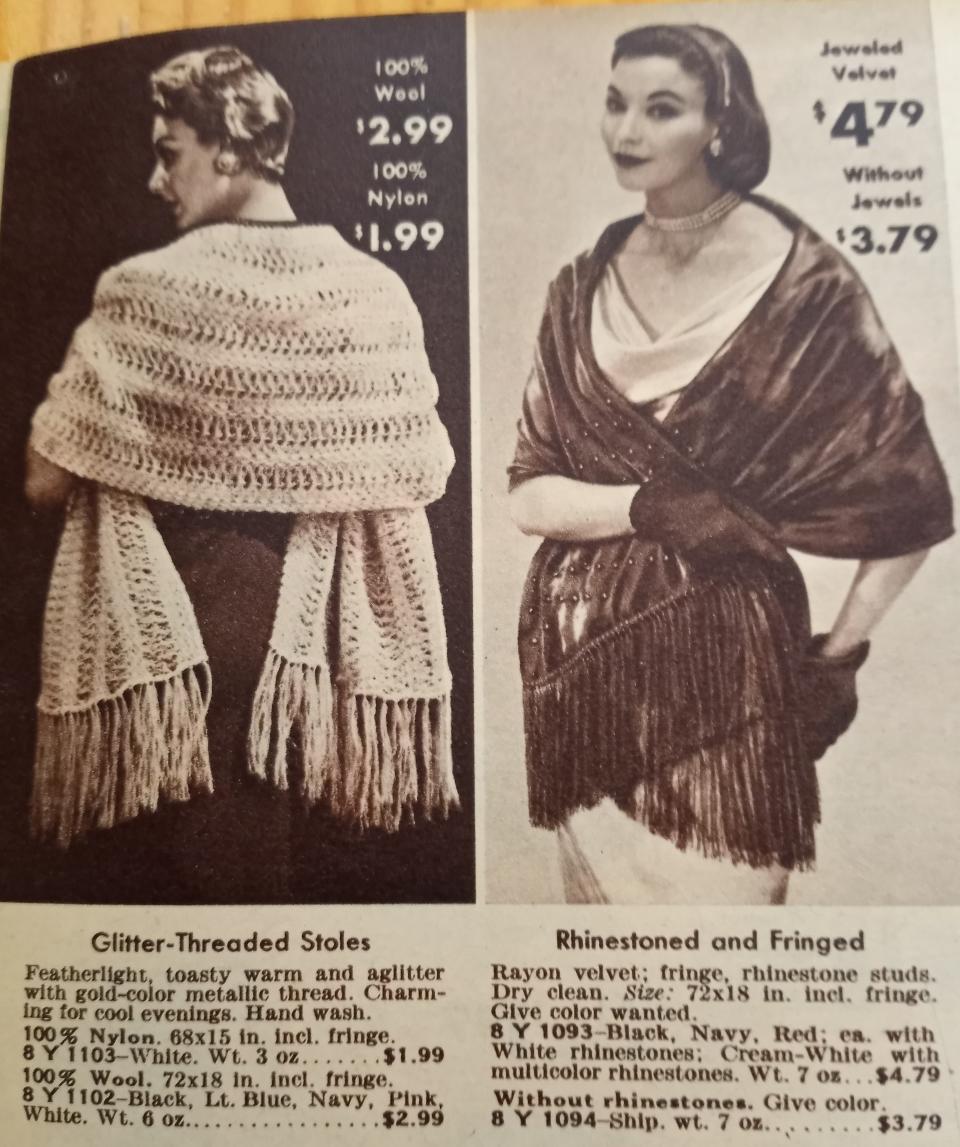Back in the Day: Cool fall weather was a time for wearing shawls
As summer ends, I am reminded that Granny often talked about a new crispness in the air — even before leaves began changing on Bear Mountain. Although the forest was always beautiful, fall brought red, orange and yellow brilliance to ordinary green trees. Walking the mile-long trail seemed more enjoyable as the sun filtered through the golden leaves.
The hottest days of summer had passed; mornings and evenings were chilly now. So, fall was a time to bring out sweaters, jackets and shawls. Especially with Sunday clothes, Granny favored shawls because they were warm, easy to wear, and lighter than coats.

In the days when new dresses were rarely affordable, a shawl added a little flair to an older outfit. They could be hand-crocheted or purchased at a favorite store on Hendersonville’s Main Street. Mail-order catalogs regularly included pages of lovely shawls, as well. Pictured on fashionable models, they might be lacey for spring or knitted for fall. Sometimes decorated with fringed tassels, they were available in many colors. Although white was always a favorite, pastel pink or light blue were quite popular. Other possible choices included navy, black, or red, especially in heavier-weight wool or velvet fabrics for fall and winter. On the coldest days, a shawl was sometimes worn over a winter coat to add another layer of warmth.

Also described as a long scarf, a wrap, or a stole, the preferred word seemed to be shawl. After all, a stole had the colloquial meaning of a fur stole, which most Appalachian ladies couldn’t afford (even when the wearing of fur was an accepted practice). So, mountain women continued crocheting, knitting or buying fabric shawls.
The idea of wearing long scarves for warmth or decorative purposes is thought to be well over two thousand years old and can be traced to China’s early silk production. Because it was exotic, expensive — yet easily transported by camel caravan — silk cloth was considered to be as valuable as gold.
India also has a long history of weaving that dates to at least 100 B.C. Their fine-woolen fabrics were valued, traded, and profitably introduced to the outside world. Fortunately, for the promotion of their business interests, the 4,000-mile overland Silk Road came through India on the way from China to Rome (130 B.C. to 1453 A.D.).
From Rome, treasures that had originated in China and India were resold to kings, queens, and wealthy families throughout Europe. Silk from China and pashm (now known as cashmere) from India became highly desirable fabrics for clothing and decorative scarves. Aristocratic ladies wanted the newest styles, and they eagerly copied those worn by Royals.
As a result of world exploration during the 15th and 16th centuries, new trade routes developed across both the Pacific and Atlantic Oceans. Exotic fabrics became easier to obtain, so wearing long scarves was even more fashionable. They were exported, resold, and worn by well-dressed women of diverse cultures around the world. Queen Victoria (1819-1901) in particular, favored shawls. Photographs, paintings, and even statues depict her draped in a lovely scarf. As a brilliant leader, she popularized shawls made from local fabrics to help the economy, and she chose such domestically-made products as gifts for dignitaries.
In the United States, scarves, shawls, and stoles were worn by ladies from the President’s wife to the farmer’s wife well into the 20th century. Finally giving way to ponchos and capes, the concept remains the same. Various forms of the stylish and familiar wrap have come, gone, and come again in the world of fashion.
When days turned cool, ladies would reach for their favorite shawl — and some still do. Women of all age groups recognized the ease of wearing such a comfortable style, so they were prevalent, especially in the South. Granny always felt more dressed-up wearing a classy shawl. In fact, she enjoyed them so much that it seemed natural for her to be buried with a lovely white shawl over her favorite pastel-blue dress.
When I see older ladies wearing shawls on fall days, I remember their long-ago practicality, versatility and popularity. Like other attractive styles from the past, I welcome their reappearance on the modern fashion scene. As days turn cooler this fall, think about relatives you have known who favored shawls, especially if they were hand-crocheted or knitted at home. Remember some of the pretty colors, designs and fabrics that were fashionable over the years.
Janie Mae Jones McKinley's latest book, "The Legacy of Bear Mountain, Volume 2," (340 pages) is available in Hendersonville at the Historic Court House Gift Shop, The Curb Market, Henderson County Genealogical & Historical Society, M. A. Pace General Store (Saluda) and at Amazon.com. Over three years of her Back in the Day newspaper columns are included, along with new stories of Granny’s life on Bear Mountain.
This article originally appeared on Hendersonville Times-News: Back in the Day: Cool fall weather was a time for wearing shawls

